The Amarnath Yatra route map weaves a mesmerizing tapestry through the Himalayas, guiding pilgrims on a transformative journey of faith and self-discovery. This sacred odyssey starts at Pahalgam, where devotees gather to embark on a pilgrimage that encompasses diverse landscapes, from lush meadows to crystalline lakes. The route winds through Chandanwari, where nature’s beauty takes center stage, and Sheshnag, where mysticism and mythology converge at a serene blue lake. Panchtarni marks a confluence of spiritual beliefs and natural elements, paving the way for the final ascent to the Amarnath Cave, where the sight of the ice Shiva Lingam invokes a deep sense of devotion. This map isn’t just a guide; it’s a roadmap to the soul’s communion with divinity amidst the splendor of nature.
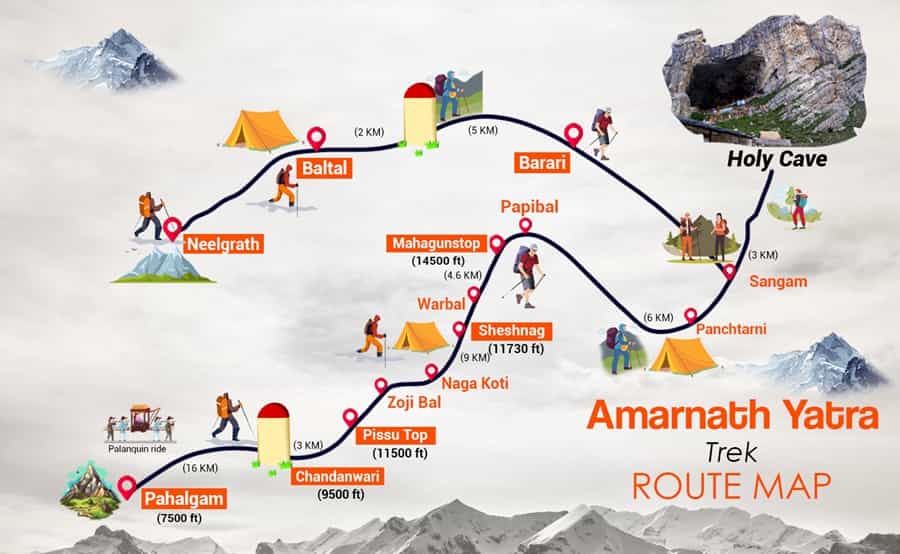
There exist two routes for the Amarnath Yatra: one of greater length and the other of shorter distance. Your selection of the pathway to reach the Amarnath Temple can be based on your preferences regarding convenience and level of challenge.
Within this blog, we have provided a comprehensive exploration of the route map for the Amarnath Yatra. This resource can assist you in enhancing the quality of your travel preparations.
How to Reach Amarnath Dham
Here’s a comprehensive guide on how to reach Amarnath:
By Air:
- The nearest major airport is the Srinagar International Airport. From here, you can travel to Srinagar, the capital city of Jammu and Kashmir.
- Srinagar is well-connected to major cities in India through regular flights.
By Train:
- The closest railway station to Amarnath is the Jammu Tawi Railway Station.
- Jammu is well-linked to various cities in India by train.
By Road:
- From Jammu, you can embark on a road journey to reach the base camps of Amarnath, either Baltal or Pahalgam.
- The journey from Jammu to Baltal is approximately 14-16 hours by road, while the drive from Jammu to Pahalgam takes around 8-10 hours.
Baltal Route:
- To reach the Baltal base camp, you can drive from Srinagar to Sonamarg and further to Baltal.
- From Baltal, you can choose to trek on foot or take a helicopter to Panjtarni, which is close to the Amarnath Cave.
Pahalgam Route:
- If you’re taking the Pahalgam route, drive from Srinagar to Pahalgam, a picturesque town.
- From Pahalgam, trekking is the primary mode of reaching the cave. Alternatively, you can also take a helicopter to Panjtarni from Pahalgam.
Helicopter Services:
- Helicopter services are available from both Baltal and Pahalgam to Panjtarni.
- The helicopter journey significantly reduces the trekking distance and is suitable for those who may have physical limitations.
Trekking:
- The trekking routes from Baltal and Pahalgam to the Amarnath Cave are well-marked but can be physically demanding due to the high altitude and steep terrain.
- These treks typically take a few days, with designated stops for resting along the way.
It’s important to note that the Amarnath Yatra occurs during a specific period each year, usually between June and August, when the cave is accessible due to favorable weather conditions. The route and availability of transportation can vary depending on the year and the situation in the region.
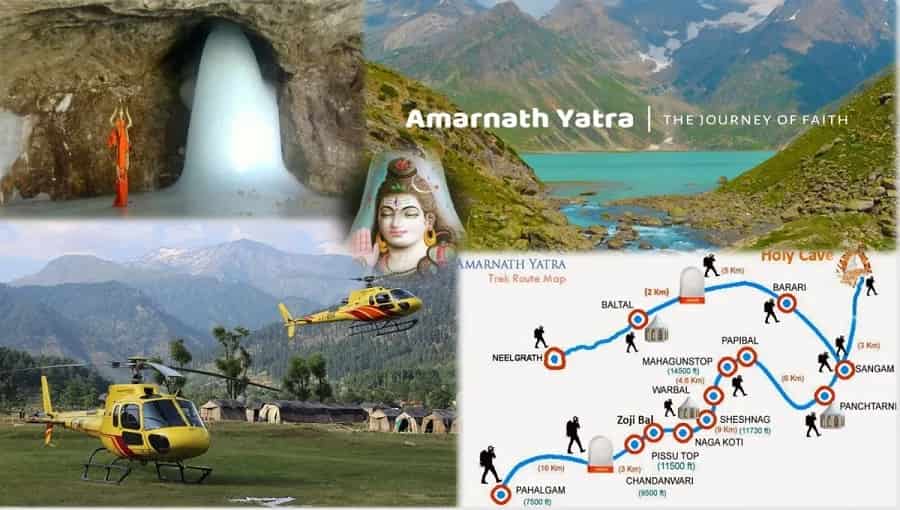
Amarnath Yatra Routes
1- Pahalgam to Amarnath Route
Pahalgam Base Camp: The journey commences in Pahalgam, which serves as one of the primary base camps for the Amarnath Yatra. Pahalgam is a picturesque town located around 96 kilometers from Srinagar and is known for its natural beauty and serene landscapes.
Chandanwari: The trek begins from Pahalgam and progresses towards Chandanwari, which is approximately 16 kilometers away. This stretch takes trekkers through lush green valleys, and the journey can be covered on foot or by various modes of transportation available at the base.
Pissu Top: As trekkers continue from Chandanwari, they reach the Pissu Top, situated at an elevation of around 3,600 meters (11,811 feet) above sea level. This section of the route offers panoramic views of the surrounding mountains and is often used as a resting point.
Sheshnag: Moving forward, the route leads to Sheshnag, which is about 12 kilometers from Pissu Top. Sheshnag is renowned for its high-altitude lake and serves as a significant campsite for pilgrims. The lake is said to be associated with Lord Shiva’s mythology.
Mahagunas Pass: From Sheshnag, the journey advances to the Mahagunas Pass, located at an altitude of around 4,600 meters (15,091 feet). This part of the trek presents challenges due to the steep ascent and the effects of high altitude.
Panchtarni: After crossing the Mahagunas Pass, trekkers reach Panchtarni, which is approximately 12 kilometers away. Panchtarni is named after the five streams that converge here. It’s a crucial stop before the final stretch to the cave.
Amarnath Cave: The final leg of the journey takes pilgrims from Panchtarni to the holy Amarnath Cave, located at an altitude of around 3,888 meters (12,756 feet). This cave houses the natural ice Shiva Linga and holds immense significance for devotees who come to offer their prayers and seek blessings.
The Pahalgam to Amarnath route offers a longer but relatively gentler trek compared to the Baltal route.
2- Baltal to Amarnath Route
Baltal Base Camp: The journey usually begins at Baltal, which serves as one of the base camps for the pilgrimage. Baltal is located around 14 kilometers north of Pahalgam and is known for its accessibility and shorter trekking distance to the cave.
Domel: The trek starts from Baltal and continues towards Domel, which is around 4 kilometers away. This is the initial stretch of the journey and offers scenic views of the surrounding mountains and landscapes.
Sangam Point: After Domel, the route proceeds to the Sangam Point, where the waters of two streams meet. It’s a picturesque spot where trekkers often take a short break before continuing their journey.
Barari Marg: As the journey continues, trekkers enter the Barari Marg area. This stretch is known for its lush green meadows and vibrant flowers, creating a beautiful contrast against the towering mountains.
Mahagunas Pass: Moving ahead, trekkers reach the Mahagunas Pass, which is situated at an altitude of around 4,600 meters (15,091 feet) above sea level. This is one of the challenging sections of the trek due to the steep ascent and thin air at higher altitudes.
Amarnath Cave: After crossing the Mahagunas Pass, trekkers finally reach the holy Amarnath Cave, situated at an altitude of approximately 3,888 meters (12,756 feet). The cave houses the naturally formed ice Shiva Linga, which is the main attraction of the pilgrimage. Devotees offer prayers here and seek blessings.
The Baltal to Amarnath route is known for its relatively shorter distance and steeper ascent compared to the Pahalgam route. However, it’s important to note that the trek can be physically demanding and challenging due to the high altitude and variable weather conditions. Trekkers are advised to be well-prepared, physically fit, and equipped with proper clothing and essentials for the journey.
Amarnath Helicopter Route
The Amarnath Yatra offers helicopter services that provide a faster and more convenient way for pilgrims to reach the sacred Amarnath Cave. These helicopter routes significantly reduce the trekking distance and are especially helpful for those who may have difficulty with the strenuous trek. Here are the commonly used helicopter routes for the Amarnath Yatra:
Baltal to Panjtarni Helicopter Route:
- Starting Point: The helicopter journey typically begins from the Baltal base camp.
- Destination: The helicopter lands at the Panjtarni helipad.
- Duration: The flight time between Baltal and Panjtarni is relatively short, around 7-10 minutes.
- Significance: Panjtarni serves as a crucial stop for pilgrims before they proceed on foot to the Amarnath Cave, which is approximately 6 kilometers away.
Pahalgam to Panjtarni Helicopter Route:
- Starting Point: This route starts from the helipad in Pahalgam.
- Destination: The helicopter lands at the Panjtarni helipad.
- Duration: The flight time between Pahalgam and Panjtarni is also around 7-10 minutes.
- Significance: Pilgrims using this route also disembark at Panjtarni and then continue their journey to the cave by foot.
Accommodation Facilities Along the Amarnath Yatra Routes
Now that you are familiar with the route map leading to the Amarnath Temple, let’s delve into the available lodging choices along the Amarnath Yatra route.
Camps for overnight stays are conveniently positioned along the Amarnath route, situated in various locations such as Baltal, Nunwan, Sheshnag, and Panchtarni. These camps, established through the collaborative efforts of the Shri Amarnathji Shrine Board and private contractors, come at an estimated cost of INR 250 to 400 per night.
Alternatively, there are options to reside in private tents and huts established at several points along the Amarnath Yatra route. These accommodations are thoughtfully furnished with quilts, blankets, pillows, and mattresses. The approximate cost for these options ranges from 250 to 1000 per night.
Food Options Along the Amarnath Yatra Routes
During your Amarnath Yatra expedition, you’ll be offered complimentary meals, water, and refreshments. Additionally, Langar services are available at various points. If you prefer to cook your own meals, ration can be obtained at government-run depots located at Chandanwari, Sheshnag, and Panchtarni, all at reasonable prices.
Furthermore, there are tea stalls and small eateries present. It’s advisable to carry snacks like canned food, dark chocolate, roasted chana, glucose biscuits, and dried fruits to sustain your energy levels and supplement your diet.
Moreover, a cafeteria is accessible at the Baltal Helipad. Naturally, this option is exclusively for those who opt for helicopter services for the Amarnath Yatra.
Facilities Offered During the Amarnath Yatra
Here are several amenities provided to pilgrims during the spiritual journey to the Amarnath Cave:
- Booking counters for buses are situated in key cities such as Srinagar and Pahalgam. For a convenient experience, consider booking Amarnath Yatra packages through Pilgrimagetour.in.
- Medical services are readily available to pilgrims. Emergency Aid Centers (EAC), Medical Aid Centers (MAC), and base hospitals are strategically positioned along the route to the Amarnath Temple.
- Cloakrooms are provided by the SASB at Baltal, Nunwan, and the Amarnath Cave. A nominal fee of INR 10 is charged for 24 hours of usage.
- Visitors arriving in their personal vehicles can utilize the parking facility at the Baltal base camp for two-wheelers, LMVs (Light Motor Vehicles), and MMVs (Medium Motor Vehicles).
- The BSNL network coverage extends to the Amarnath route, and yatris can obtain pre-loaded yatra SIM cards from BSNL at affordable prices.

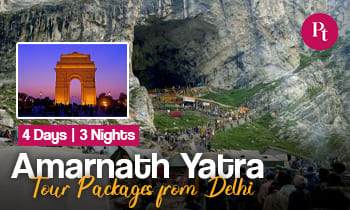
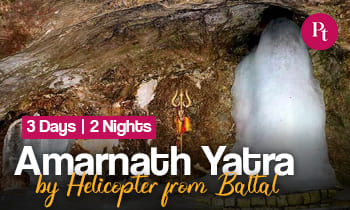

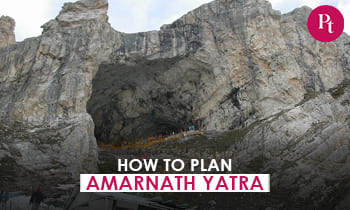
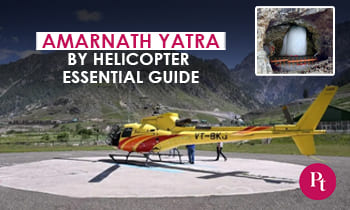
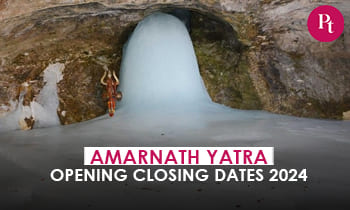

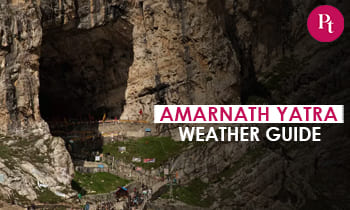
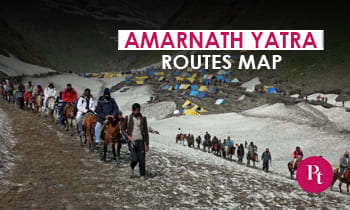

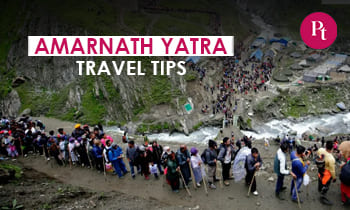
 Call
Call WhatsApp
WhatsApp Enquiry
Enquiry